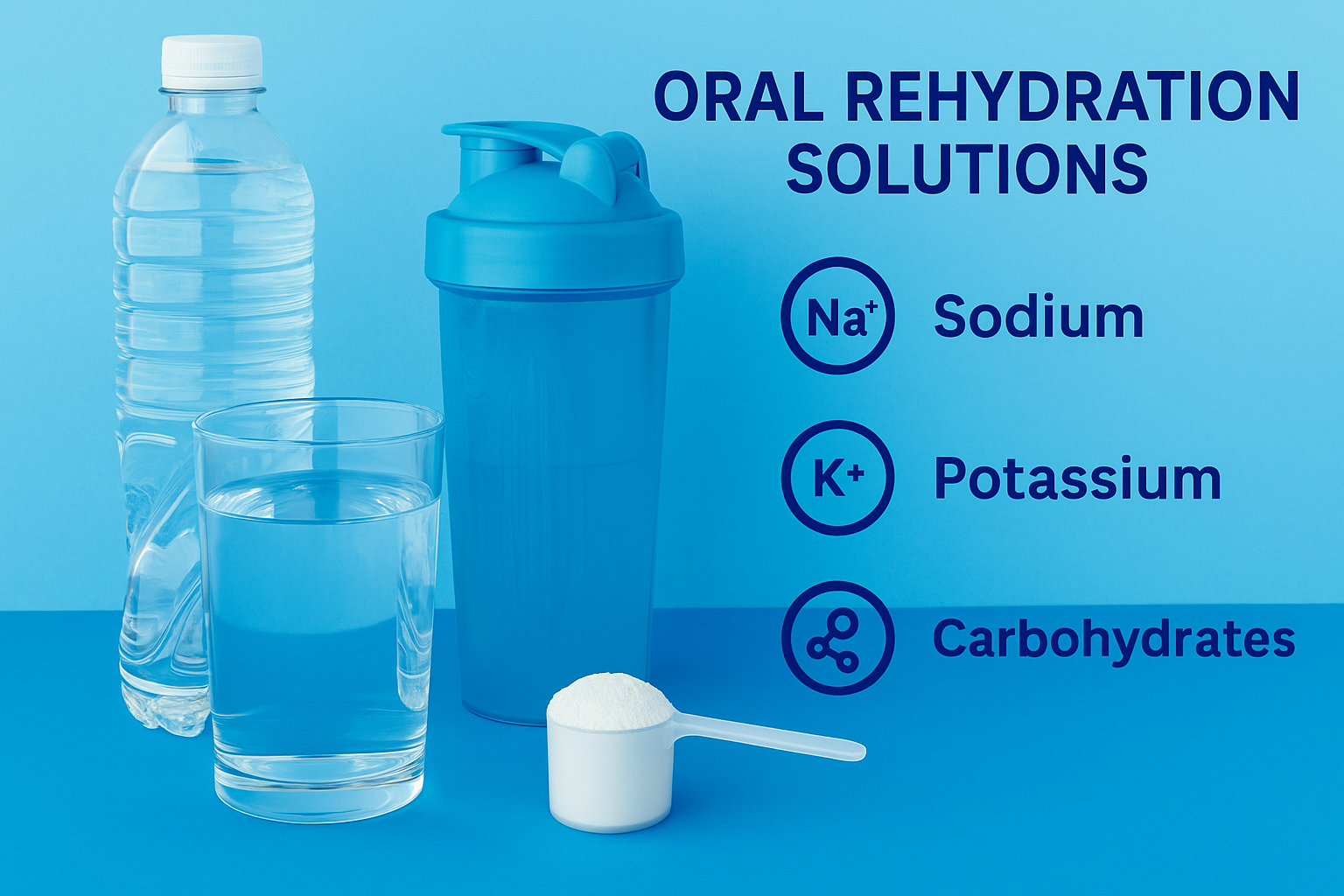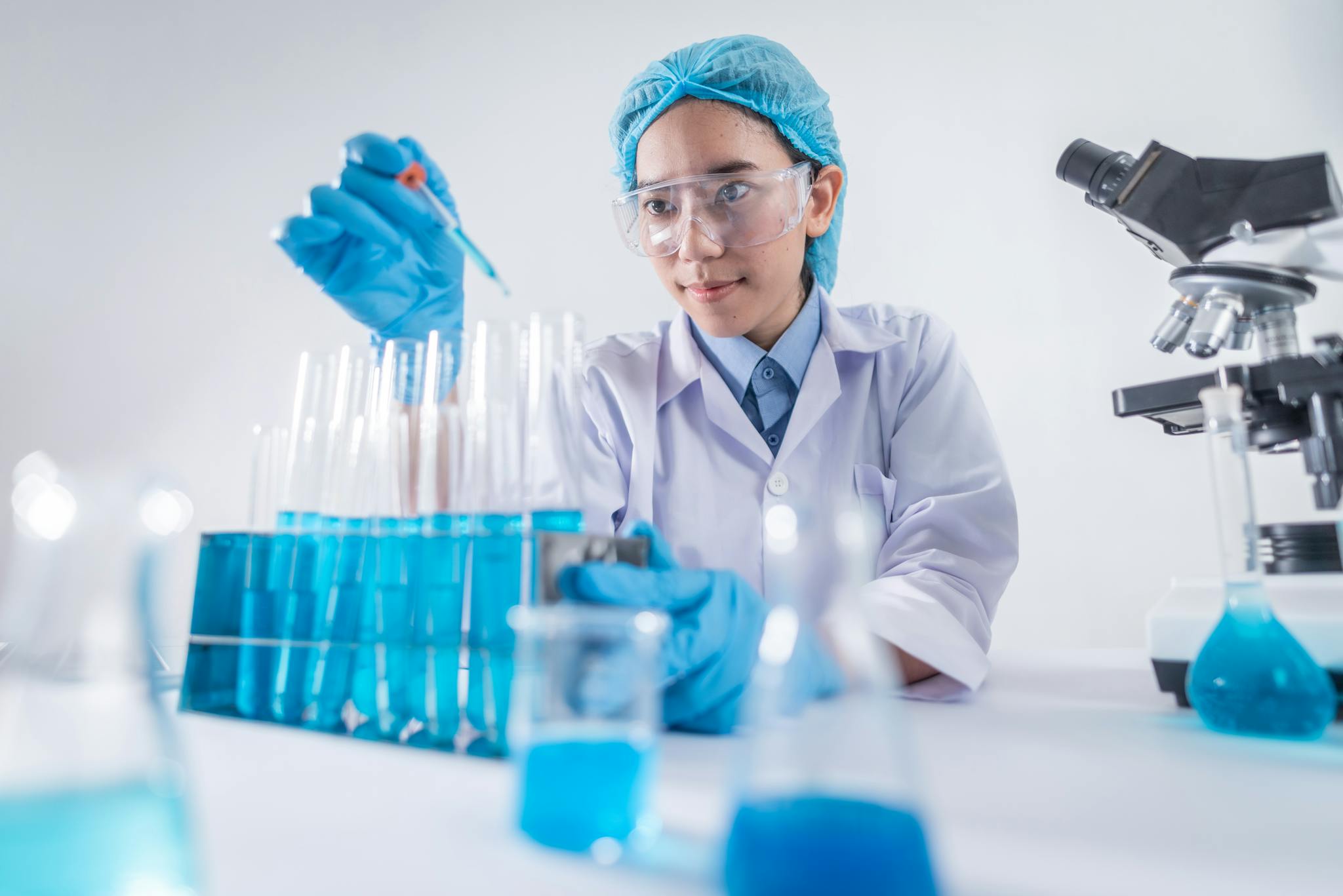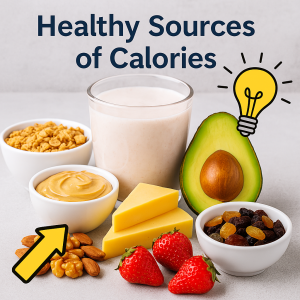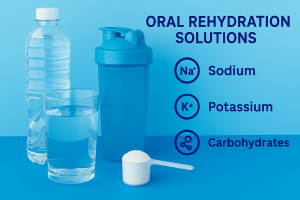September 30, 2025Acetaminophen (also known as paracetamol or by the brand name Tylenol) is one of the most widely used medications in pregnancy. It’s recommended for fever and pain and has long been considered safe when taken as directed. In fact, studies show that more than 50% of pregnant women worldwide use acetaminophen at some point during pregnancy (Bandoli et al., 2019). But concerns have grown in recent years, with some media headlines and even political statements suggesting that acetaminophen could be linked to autism spectrum disorder (ASD) and attention-deficit/hyperactivity disorder (ADHD). So what does the evidence really say? Autism, ADHD, and the Search for Causes Rates of ASD and ADHD diagnoses have increased sharply in recent decades. In the U.S., ASD prevalence rose by 98% from 2010 to 2020, while ADHD diagnoses increased by 36% from 2003 to 2019 (Chu et al., 2025). These trends have pushed researchers to explore possible environmental, genetic, and prenatal risk factors — including acetaminophen. Key Studies on Acetaminophen in Pregnancy Swedish Sibling-Controlled Study (2024) Population: 2.48 million children born 1995–2019 Finding: Slightly higher autism/ADHD risk in general population (HR ≈ 1.05–1.07). But: In sibling comparisons (one exposed, one not), the link disappeared (HR ≈ 1.00). Takeaway: Family and genetic factors likely explain earlier signals, not the drug itself (Ahlqvist et al., 2024). Danish Birth Cohort (2014) Population: 64,322 pregnancies Finding: Higher risk of hyperkinetic disorders, ADHD medication use, and behavioral issues (HR = 1.29–1.37). Dose–response trend: Stronger when used across multiple trimesters. Limitations: Self-reported use; observational (Liew et al., 2014). Umbilical Cord Blood Biomarkers (2020) Population: 996 newborns Finding: Higher acetaminophen levels → 2–3x greater odds of ADHD and ASD. Strength: Biomarker-based, not self-report. Limitation: Confounding by reason for use (e.g., fever itself may impact outcomes) (Ji et al., 2020). Possible Biological Mechanism A 2025 review suggested that the metabolite NAPQI, a known mitochondrial toxin, may disrupt fetal brain development by impairing energy metabolism and causing neuroinflammation (Chu et al., 2025). This is still a theory, not proven in human pregnancy. Systematic Reviews and FDA Guidance Systematic review (2025): Out of 46 studies, 27 showed positive associations, 9 showed none, 4 even showed protective effects. Studies with stronger methods leaned toward risk, but results remain inconsistent (Prada et al., 2025). FDA (2025): Acknowledged possible association; advises limiting acetaminophen use in pregnancy to medically necessary cases. Many experts say the evidence is too weak to change practice guidelines. Bottom Line for Pregnant Women ✅ Acetaminophen is still considered safe in pregnancy when used as directed. ✅ Use the lowest effective dose for the shortest possible time. ✅ Always consult a healthcare provider before taking any medication. ⚠️ Avoid fear-driven headlines — skipping proven treatments can sometimes be riskier than the medication itself. FAQs 1. Is acetaminophen safe during pregnancy?Yes, when used appropriately and under medical guidance. 2. Does acetaminophen cause autism or ADHD?No causal link has been proven. The best studies suggest family/genetic factors explain most of the association. 3. Should I stop taking acetaminophen while pregnant?Do not stop or start any medication without talking to your doctor. Use only when medically needed. Medical Disclaimer This article is for informational and educational purposes only. It is not medical advice and should not replace consultation with a licensed physician, pharmacist, or qualified healthcare provider. Always seek professional medical advice before starting, stopping, or changing any medication during pregnancy. References 1. Ahlqvist, V. H., Sjöqvist, H., Dalman, C., Karlsson, H., Stephansson, O., Johansson, S., Magnusson, C., Gardner, R. M., & Lee, B. K. (2024). Acetaminophen Use During Pregnancy and Children’s Risk of Autism, ADHD, and Intellectual Disability. JAMA, 331(14), 1205–1214. https://doi.org/10.1001/jama.2024.3172 2. Bandoli, G., Palmsten, K., & Chambers, C. D. (2019). Acetaminophen use in pregnancy: Examining prevalence, timing, and indication of use in a prospective birth cohort. Paediatric and Perinatal Epidemiology, 34, 237–246. https://doi.org/10.1111/ppe.12595 3. Liew, Z., Ritz, B., Rebordosa, C., Lee, P. C., & Olsen, J. (2014). Acetaminophen use during pregnancy, behavioral problems, and hyperkinetic disorders. JAMA Pediatrics, 168(4), 313–320. https://doi.org/10.1001/jamapediatrics.2013.4914 4. Ji, Y., Azuine, R. E., Zhang, Y., et al. (2020). Association of Cord Plasma Biomarkers of In Utero Acetaminophen Exposure With Risk of ADHD and ASD in Childhood. JAMA Psychiatry, 77(2), 180–189. https://doi.org/10.1001/jamapsychiatry.2019.3259 5. Chu, S., Woodfin, S., Bayliss, E., et al. (2025). Acetaminophen’s Role in Autism and ADHD: A Mitochondrial Perspective. International Journal of Molecular Sciences, 26(17), 8585. https://doi.org/10.3390/ijms26178585 6. Prada, D., Ritz, B., Bauer, A. Z., & Baccarelli, A. A. (2025). Evaluation of the evidence on acetaminophen use and neurodevelopmental disorders using the Navigation Guide methodology. Environmental Health, 24(1), 56. https://doi.org/10.1186/s12940-025-01208-0 7. U.S. Food & Drug Administration. (2025). U.S. Food & Drug Administration. (2025). FDA responds to evidence of possible association between autism and acetaminophen use during pregnancy. https://www.fda.gov/news-events/press-announcements/fda-responds-evidence-possible-association-between-autism-and-acetaminophen-use-during [...] Read more...
September 6, 2025Ensuring proper weight gaining food and nutrition for children is one of the most important responsibilities of a parent. The challenge is that kids are often picky eaters — their preferences are shaped by taste, smell, texture, and even color. It’s not unusual for a child to refuse a meal if one of these factors feels unappealing. To make things more difficult, many children are drawn to junk food and processed snacks, making it harder to expand their food horizons. Understanding Children’s Weight One of the simplest signs that a child might be underweight is if they are not outgrowing their clothes each season. Pediatricians often use Body Mass Index (BMI) to assess whether a child is underweight, overweight, or within a healthy range. Children who fall in the bottom five percent for BMI may be considered underweight. Common causes of being underweight include: Low food intake or food avoidance (selective eating habits) Food allergies or digestive issues linked to chronic or acute illness Medication side effects — for example, certain ADHD medications can reduce appetite ⚠️ Parents should never stop a child’s prescribed therapy without consulting a pediatrician or pharmacist. A healthcare professional can help balance treatment benefits with potential side effects on appetite and growth. Weight Gain Shakes for Kids If your child struggles with food intake, weight gain shakes can be an effective solution. Liquids are often easier to consume than solid foods, and shakes can be customized with healthy, nutrient-dense ingredients. A good weight gaining food for children should include: Protein (milk, yogurt, nut butters, soy milk) Healthy fats (avocado, nuts, seeds) Carbohydrates (fruit, oats, honey) 👉 Important: Choose shakes designed for children or make them at home. Avoid adult “weight gainer” formulas (often meant for bodybuilders) as they may contain excessive protein and additives unsafe for kids. Shakes are best used as supplements between meals, not as replacements for balanced whole-food meals. Healthy Sources of Calories Children who don’t consume enough calories may see their weight percentile drop. According to the Dietary Guidelines, kids aged 2–10 generally need 1,000–1,800 calories per day, depending on age, activity level, genetics, and environment. Rather than obsessively counting every calorie, focus on adding high-calorie, nutrient-dense foods such as: Avocados Nuts and nut butters Seeds and dried fruit Dairy products (milk, cream, yogurt, cheese) Lactose-free or plant-based alternatives (soy milk, oat milk, coconut milk, almond milk) for children with allergies or intolerances These foods can easily be blended into shakes or added to meals to increase calorie intake without compromising nutrition. Making Weight Gain Fun for Kids Preparing shakes can be a fun, hands-on activity. Involving your kids in the process makes them more likely to drink what they’ve created. You can also make shakes more appealing by: Serving them in colorful cups or fun bowls Adding toppings like granola, fruit, or cocoa nibs Letting kids choose a few ingredients themselves This simple change can turn mealtime into playtime, while still boosting their calorie intake. Final Thoughts For adults, eating more often isn’t always necessary. But for children who struggle to gain weight, increasing meal frequency can be a healthy and effective approach. Many kids actually need help adding a few extra pounds to support their growth and development. By focusing on balanced shakes, calorie-rich foods (weight gaining food for children), and fun preparation methods parents can support healthy weight gain in their little ones — ensuring they grow strong, energetic, and ready for the future. [...] Read more...
September 6, 2025Discover how oral rehydration solutions (ORS) improve hydration, exercise performance, and recovery. Learn the science behind electrolytes, sodium, potassium, and carbohydrates for better endurance. Hydration, Electrolytes, and Exercise Exercise and physical activities change the electrolyte levels and water homeostasis. The lack of water and electrolytes can result in dehydration and impaired tissue delivery of oxygen. Rehrer’s study (2001) highlights that excessive water deprivation and severe dehydration during American football training can be fatal. Dehydration can reduce exercise performance because of reduced blood flow to the muscles and skin during exercise, including other physiologic changes such as decreased plasma volume, blood pressure, blood flow to the kidneys, and impaired regulation of body temperature. The Role of Sodium in ORS In the last century, it was observed that sodium (Na⁺) co-transports actively with glucose in the intestine, creating an osmotic gradient which facilitates water absorption in the intestines. This mineral also creates a concentration gradient that drives water reabsorption in the renal tubules and plays a key role in stimulating thirst, as large water intake without proper sodium levels can decrease extracellular osmolality and inhibit the body’s natural thirst response. One study in nine healthy males examined the efficacy of ingesting an oral rehydration solution (ORS) in restoring fluid balance compared with commercially available sports drinks and water during recovery after moderate-high intensity cycling exercise. The findings show higher fluid retention in participants ingesting ORS compared with regular water and sports drinks. Some of the advantages of including sodium in these solutions is maintaining higher plasma and extracellular fluid volumes, preventing further declines in plasma sodium concentration, lowering the urine output, and sustaining the osmotic drive to drink. When the sodium plasma concentrations decline, greater urine losses are stimulated by the dilution of the blood, which can present a higher risk of developing hyponatraemia. These states can occur during and after exercise in individuals consuming large volumes of fluid to replace sweat losses with fluids that contain low or no sodium concentration (Fan et al., 2020). Potassium and Other Key Electrolytes While sodium is the main cation in extracellular fluid, potassium (K⁺) represents the main cation in intracellular compartments. Potassium helps regulate cell volume, intracellular fluid balance, nerve signal transmission, and muscle contraction. These two macro elements, when added to ORS, are usually conjugated with chloride as the main anion in the extracellular fluid, while also having a high excretion rate in sweat, mainly as sodium chloride. This anion can be replaced with citrate and bicarbonate anions to improve the palatability of these formulations. Carbohydrates in ORS Carbohydrates are also added with the purpose of maintaining a high carbohydrate oxidation rate, supporting performance during exercise, and replenishing glycogen stores in the recovery phase. As mentioned, the carbohydrates are also added for sustaining fluid balance, mainly because of the intestinal co-transport of glucose and sodium (Pérez-Castillo et al., 2023). A recent study by Park et al. (2016) reported the effects of consuming an electrolyte drink versus regular water in 11 adult male individuals before exercise. In the group that had the electrolytes, maximum oxygen intake and exercise time were significantly increased compared to the group that consumed regular water. One study assessed the effects of a carbohydrate-electrolyte solution on soccer performance. Twenty-two professional soccer players participated, consuming the solution or a placebo throughout the 90-minute match. The results showed that the players who consumed the carbohydrate-electrolyte enriched potion had faster dribble test times and better precision test ratings compared to the placebo group (Ostojic & Mazic, 2002). ORS in Hot Environments Working in a hot environment can cause loss of salts, primarily sodium, along with water loss due to intense sweating. Therefore, supplying appropriate amounts of water and electrolytes is important. ORS is ideal for intestinal absorption of water and electrolytes because of its characteristic composition, especially the sodium concentration, which is higher than commercially available sports drinks. According to the Ishikawa study (2010), ORS intake during outdoor work in a hot environment is effective for keeping homeostasis of water and electrolytes in the body, and may help prevent industrial accidents by reducing the degree of associated fatigue. ORS and Muscle Cramps Muscle cramp is a painful, involuntary muscle contraction that occurs during or following exercise. The causes are multifactorial, but dehydration and electrolyte deficits are considered to be factors. In a recent study, the results suggest that ORS intake during exercise decreased muscle cramp susceptibility, forming the conclusion that ingesting ORS appears to be effective for preventing exercise-associated muscle cramps (Lau et al., 2021). References: Fan, P. W., Burns, S. F., & Lee, J. K. W. (2020). Efficacy of ingesting an oral rehydration solution after exercise on fluid balance and endurance performance. Nutrients, 12(12), 3826. Ishikawa, T., Tamura, H., Ishiguro, H., Yamaguchi, K., & Minami, K. (2010). Effect of oral rehydration solution on fatigue during outdoor work in a hot environment: a randomized crossover study. Journal of occupational health, 52(4), 209-215. Lau, W. Y., Kato, H., & Nosaka, K. (2021). Effect of oral rehydration solution versus spring water intake during exercise in the heat on muscle cramp susceptibility of young men. Journal of the International Society of Sports Nutrition, 18, 1-9. Ostojic, S. M., & Mazic, S. (2002). Effects of a carbohydrate-electrolyte drink on specific soccer tests and performance. Journal of sports science & medicine, 1(2), 47. Park, S. H., Jeon, B. Y., Kim, Y. H., & Yoon, J. H. (2016). Effects of deep-sea water electrolyte supplement on blood electrolyte concentration and exercise performance during acute exercise in hot environment. Korean Soc. Living Environ. Syst, 23, 835-842. Pérez-Castillo, Í. M., Williams, J. A., López-Chicharro, J., Mihic, N., Rueda, R., Bouzamondo, H., & Horswill, C. A. (2023). Compositional aspects of beverages designed to promote hydration before, during, and after exercise: Concepts revisited. Nutrients, 16(1), 17. Rehrer, N. J. (2001). Fluid and electrolyte balance in ultra-endurance sport. Sports Medicine, 31, 701-715. ⚠️ Disclaimer: This content is for informational purposes only and is not a substitute for professional medical advice. Always consult your doctor or pharmacist before making health decisions. [...] Read more...
Independent Pharmacy News, Expert Health Analysis, and In-Depth Medical Perspectives.



At PharmaTipsToday, our mission is to deliver independent, reliable, and timely coverage of the ever-evolving world of health and pharmaceuticals.
Take the Next Step in Your Pharmacy Journey
Why Choose PharmaTips?
PharmaTips delivers expert advice and practical resources to navigate the complexities of pharmacy education effectively.
Discover More
Your go-to resource for pharmacy education insights




